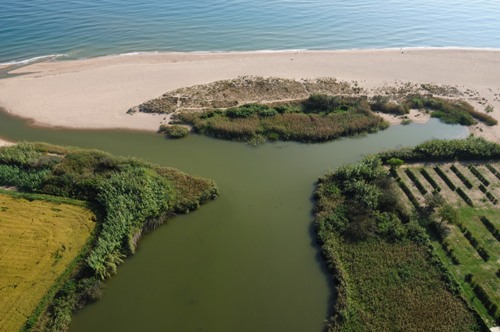Biology
Certain Plant Roots Select the Microorganisms that Colonize Them
Wetlands are environments of high biodiversity, environmental value and water importance that play a relevant role in the ecosystem. The vegetation in these environments consists of aquatic plants in whose roots microorganisms live which, for example, can regulate their development and modify the circulation of nutrients in the surrounding sediments. A study conducted by researchers of the UAB and the University of Girona in cooperation with the Doñana Biological Station shows that the roots of certain species have a selecting effect on the communities of microorganisms.
References
Llirós, M.; Trias, R.; Borrego, C.; Bañeras, Ll. Specific Archaeal communities are selected on the root surfaces of Ruppia spp. and Phragmites australis. Wetlands 34(2): 403-411. 2013. doi: 10.1007/s13157-013-0507-9.
Coastal wetlands play important roles at ecosystem level. Wetlands and estuaries are recognized reservoirs for biodiversity and valuable landscape builders. Moreover, as transient links between terrestrial and marine habitats they are relevant in ecosystem services, such as nutrient removal and water flux controlling. Wetland functioning is strongly affected by presence and type of vegetation. Furthermore, microbes present in the roots of these aquatic plants (i.e., rhizosphere) can establish complex relations with their hosts and, among few others, determine plant growth and nutrient recirculation in the surrounding sediments. Besides, there’s a clear regulation effect of the microbial communities present in the roots and in the vicinities throughout plant exudates. Accordingly, the rhizosphere is currently considered as a hotspot for microbial ecologists. However, little is known about Plant–Archaea interactions in aquatic macrophytes, but some works have recently evidenced a selective effect over ammonia–oxidisers and methanogens in the rhizosphere of aquatic plants and macrophytes.
Our aim was to investigate the potential of wetland plant roots as selecting drivers for specific Archaea in the root surface. To do so, samples were collected from two distinct and common macrophytes (common reed or Phragmites australis and widgeon grass or Ruppia spp) present at two distinct environmentally protected wetland areas (the Parc Natural dels Aiguamolls de l’Empordà i el Baix Ter and the Parque Natural de Doñana). At both geographic areas, low (oligohaline) and high (euhaline) salinity wetlands were sampled in order to analyse the archaeal community present by means of 16S rRNA gene cloning and sequencing.

Image: Oligohaline wetland of Basses d’en Coll, en el Parc Natural dels Aiguamolls de l’Empordà i el Baix Ter. Source: Dr. Lluís Bañeras (UdG).
Data retrieved in the present study evidenced that communities detected in unvegetated sediment samples showed high variability due to pH and conductivity (indirect measurement of salinity) changes in the analysed wetlands. Furthermore, the archaeal communities were mainly composed of Euryarchaeota (43% of all retrieved sequences), Crenarchaeota (36%) and Thaumarchaeota (21%). Ruppia roots clearly favoured the development of Halobacteriales despite geographical location and season. In turn, the archaeal community present in Phragmites australis roots relied more on the sampling location and time. Methanogenic lineages were not found to be significant in almost any of the analysed samples.
Our findings suggest that the archaeal communities present in the root surface of the studied macrophytes are mainly composed of heterotrophic archaea, such as Halobacteriales, Thermoplasmatales and the Miscellaneous Crenarchaeotic Group. These results also evidence putative and yet to be discovered interactions between these microbes and the plants they colonize.
Top left image: Euhaline wetland of Fra Ramon, en el Parc Natural dels Aiguamolls de l’Empordà i el Baix Ter. Source: PhD. Lluís Bañeras (UdG).
Marc Llirós
Department of Genetics and Microbiology
2024 Universitat Autònoma de Barcelona
B.11870-2012 ISSN: 2014-6388
